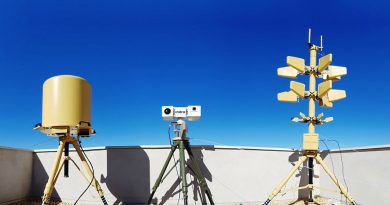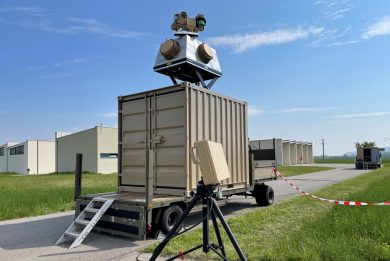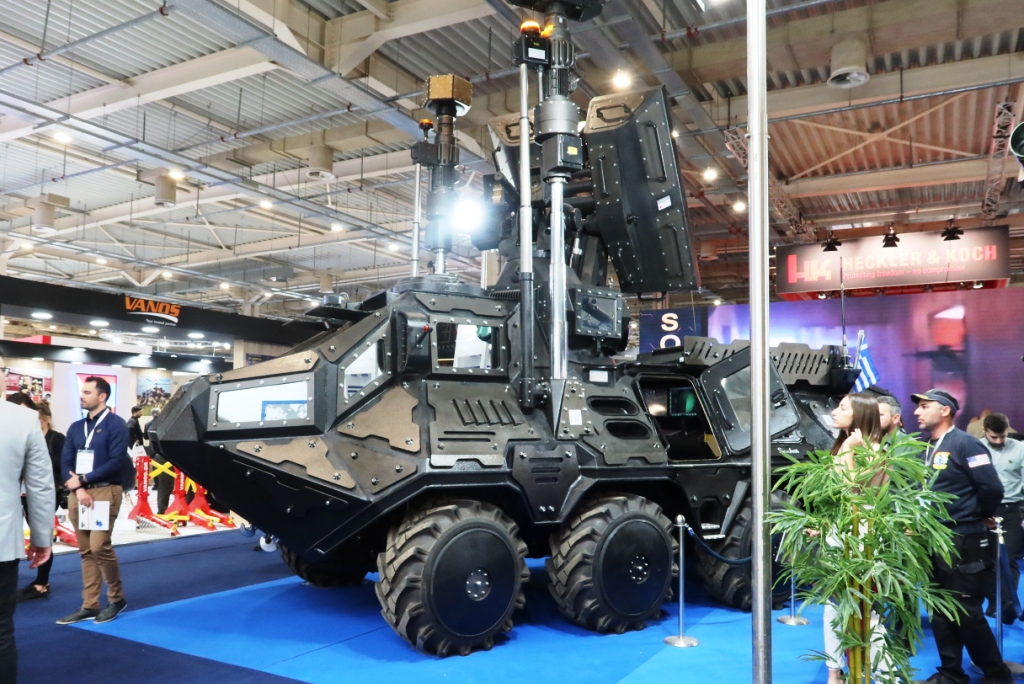
DEFEA 2023 – SR-42 star-wars C-UAS system exhibited by Soukos Robots
A high tech system well advertised thanks to its star wars like appearance, the SR-42 developed by Soukos Robotics could definitely not go unnoticed at DEFEA 2023
With over 40 years experience in industry and defence the Larissa-based Soukos Robots exhibited at DEFEA two counter-UAS (C-UAS) systems.
A star-wars look-alike, the SR-42 was installed on a BTR 8×8 armoured personnel carrier which was carrying on the top a suite of hard- and soft-kill effectors as well as active and passive sensors for detection. The longer range sensor was a radar with a 35 km detection range against small targets, Soukos Robot not revealing the third party that provided the sensor saying only that it comes from the European Union. Also coming from a third party was the optronic package, which includes day and night sight, no further details being provided.
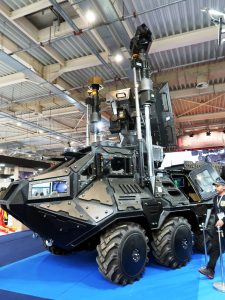
Two types of effectors are installed. The soft-kill one is a microwave jammer operating in the 0.5-4.5 GHz band, which can then disturb all frequencies used by drones to link up with the ground control station and send back images and information. Another hard kill effector is the 12.7 mm machine gun installed in a remotely controlled weapon station, which can also be used for self-defence purposes against ground threats. Typically the MW effector can force the drone to land, or make it lose its GNSS link which usually makes it turning back to base. The hard-kill effector is the 300 kW laser emitter that operates in the 430-1060 nm band. This high power is obtained using over 50 laser beams, EDR On-Line understood these might be 62, which concentrate on the target their power; according to Soukos Robotics experts using lower power beams allows reducing the blooming effect caused by the atmosphere. Reducing the beam diffusion allows maximising the power delivered on the target, which brings a number of beneficial effects; shorter time-on-target needed to deliver the same power, which in turns means a smaller amount of energy drawn from batteries, hence a higher number of possible engagements. The S$-42 laser is effective at ranges from 1 to 25 km, up to a 10 km altitude.
According to the company its laser is effective on a number of materiel such as plastic, rubber, fibreglass, aluminium, as well as on armour steel.
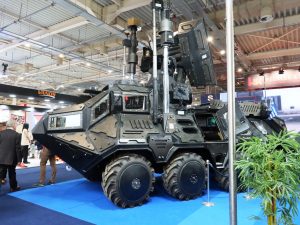
Energy is the other key issue. The BTR seen at DEFEA was a full electric vehicle, the power pack being hosted in a trailer, providing power to both the vehicle and the C-UAS system. Soukos Robotics made the choice of a battery-only solution, as a hybrid system would have generated a considerable thermal signature. That said the all-electric drive of the vehicle was developed as a demonstrator, the final choice being left to the customer. In a typical mission profile Soukos said that the laser can sustain a 2 hours engagement overall.
Soukos Robots is also producing all servo drivers, the turrets elevation speed being between 50 and 100°/s while traverse speed is between 40-80 °/s. The modular concept adopted for the laser allows to further increase the power, Soukos Robotics thinking of a 1 MW system. Currently the SR-42 has completed in-house testing and is considered at TRL-7, the company now looking for battlefield testing.
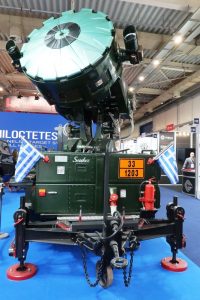
At the company booth another system based on the same laser technology was exhibited. The SR-32 is a installed on a trailer, which can be combined with other sensors and effectors. Its maximum power is 100 kW, obtained with 26 laser sources, and it has an effective range between 1 and 10 km, and a maximum altitude effectiveness of 1.7 km. The SR-32 employs the same microwave effector of the SR-42, its laser operating in the 455-1060 nm band.
Photos by P. Valpolini

